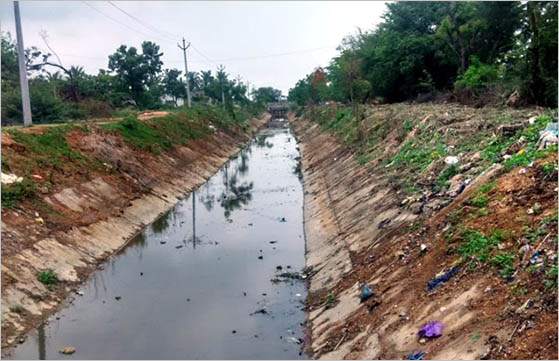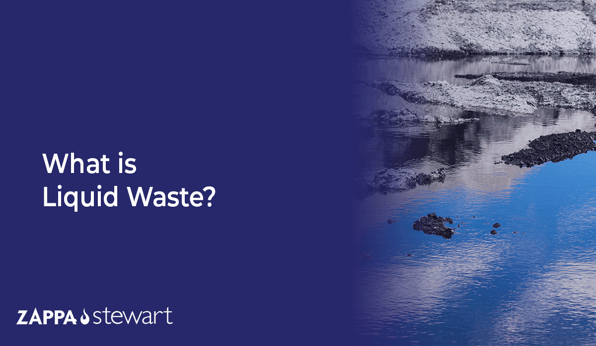Comprehensive Liquid Waste Disposal: Solutions for Homes and Businesses
Comprehensive Liquid Waste Disposal: Solutions for Homes and Businesses
Blog Article
How Liquid Garbage Disposal Functions: A Thorough Overview of Methods and Technologies Used

Review of Liquid Waste Types
The intricacy of liquid waste kinds requires a detailed understanding of their characteristics and ramifications for disposal. Liquid waste can generally be classified right into numerous types, consisting of commercial, metropolitan, farming, and contaminated materials. Each classification shows distinctive properties, calling for particular monitoring techniques to minimize environmental and wellness risks.
Industrial fluid waste stems from manufacturing processes and often consists of a variety of impurities, such as heavy metals, solvents, and natural compounds. Municipal liquid waste, primarily consisting of wastewater from houses and industrial establishments, includes natural issue, nutrients, and virus (industrial wastewater treatment). Agricultural liquid waste, consisting of runoff from farms, might consist of plant foods, chemicals, and pet waste, posing dangers to water quality and ecosystems
Harmful fluid waste is defined by its toxicity, reactivity, or prospective to trigger injury. This category includes materials like acids, bases, and certain chemicals that demand rigorous handling and disposal methods. Understanding these varied fluid waste types is important for creating efficient disposal techniques and guaranteeing conformity with environmental guidelines. Correct category and characterization are necessary for applying proper treatment techniques and decreasing the negative influences on public health and the setting.
Physical Therapy Methods

Testing is the first step, where larger fragments and debris are eliminated from the liquid waste utilizing displays or grates. This procedure secures downstream tools from damage and makes certain smoother procedure. Adhering to testing, sedimentation utilizes gravitational force to separate solids from liquids. In sedimentation tanks, much heavier particles clear up at the bottom, developing a sludge layer, while the cleared up fluid can be further dealt with.
Filtering is another crucial approach that entails passing the liquid with porous products, such as sand or membrane layers, to catch smaller sized fragments. This step enhances the high quality of the fluid, making it suitable for succeeding treatment procedures.

Chemical Treatment Techniques
Chemical therapy techniques are vital for effectively managing fluid waste, particularly in dealing with dissolved and colloidal pollutants that physical methods may not properly eliminate. These methods use various chemical representatives to counteract, precipitate, or change unsafe materials into much less dangerous forms.
One usual approach is coagulation and flocculation, where chemicals such as alum or ferric chloride are contributed to advertise the aggregation of suspended bits. This procedure enhances sedimentation, permitting much easier elimination of the resulting sludge. In addition, oxidation procedures, utilizing agents like chlorine or ozone, are employed to break down complex natural substances and microorganisms, making the waste much safer for discharge or more treatment.
Neutralization is another essential technique, which readjusts the pH of acidic or alkaline waste streams to neutral degrees, protecting against prospective injury to downstream systems and the setting. In addition, progressed oxidation procedures (AOPs) utilize mixes of oxidants and ultraviolet light to break down relentless pollutants, accomplishing a greater level of therapy efficiency.
Biological Therapy Procedures
Organic therapy procedures play a crucial role in the management of liquid waste by making use of microbes to disintegrate organic issue and decrease pollutant degrees. These procedures can be extensively categorized into cardio and anaerobic treatments, each using certain microbial areas to accomplish efficient waste deterioration.
Cardio therapy entails using oxygen to assist in the break down of organic materials by microorganisms. This procedure is commonly executed in triggered sludge systems, where aeration storage read this post here tanks offer a conducive environment for microbial growth, resulting in the oxidation of natural toxins. The resultant biomass can be divided from dealt with effluent through sedimentation.
In contrast, anaerobic treatment occurs in the absence of oxygen, depending on different microorganisms to break down organic issue. This approach is particularly helpful for high-strength waste, as it creates biogas, a renewable resource resource, while lowering sludge manufacturing. Technologies such as anaerobic digesters are often utilized in commercial and community applications.
Both cardio and anaerobic organic therapies not just minimize the ecological influence of liquid waste however also assist in source healing, making them essential components of lasting waste monitoring methods. Their performance, flexibility, and effectiveness sustain their widespread application across various sectors.
Emerging Technologies in Disposal
Ingenious approaches to fluid waste disposal are swiftly developing, driven by improvements in technology and a boosting focus on sustainability. Amongst these arising modern technologies, membrane layer bioreactors (MBRs) have gotten traction for their ability to incorporate organic therapy with membrane purification, causing premium effluent that can be recycled in different applications. MBRs enable smaller sized footprints and more reliable operations compared to conventional systems.
An additional promising growth is making use of anaerobic food digestion incorporated with nutrient recovery innovations, which not only deals with fluid waste but likewise produces biogas and recuperates valuable nutrients like nitrogen and phosphorus. This dual benefit boosts resource efficiency and reduces environmental impact.
Furthermore, advanced oxidation processes (AOPs) are being taken on for the degradation of intricate natural read here toxins. These techniques utilize powerful oxidants and drivers to break down pollutants at the molecular degree, using an extremely effective remedy for difficult waste streams.
Furthermore, the integration of expert system and artificial intelligence in waste management systems is maximizing functional efficiency and anticipating upkeep, bring about minimized prices and boosted ecological conformity. These modern technologies show a substantial change in the direction of more lasting and efficient fluid garbage disposal techniques.
Verdict
In verdict, efficient fluid waste disposal requires an extensive understanding of numerous techniques and modern technologies. By constantly progressing these approaches, it becomes possible to attend to the expanding obstacles associated with liquid waste, eventually adding to environmental defense and source recovery.
Liquid waste disposal is a critical element of environmental administration, calling for a comprehensive understanding of different strategies and modern technologies customized to different waste types. Fluid waste can broadly be classified right into several kinds, including industrial, metropolitan, farming, and hazardous waste. Agricultural fluid waste, including drainage from ranches, may contain plant foods, chemicals, and animal waste, posing dangers to water top quality and environments.
Different physical treatment approaches play an important duty in handling fluid waste properly - industrial wastewater treatment.In verdict, efficient liquid why not try this out waste disposal demands an extensive understanding of numerous strategies and innovations
Report this page